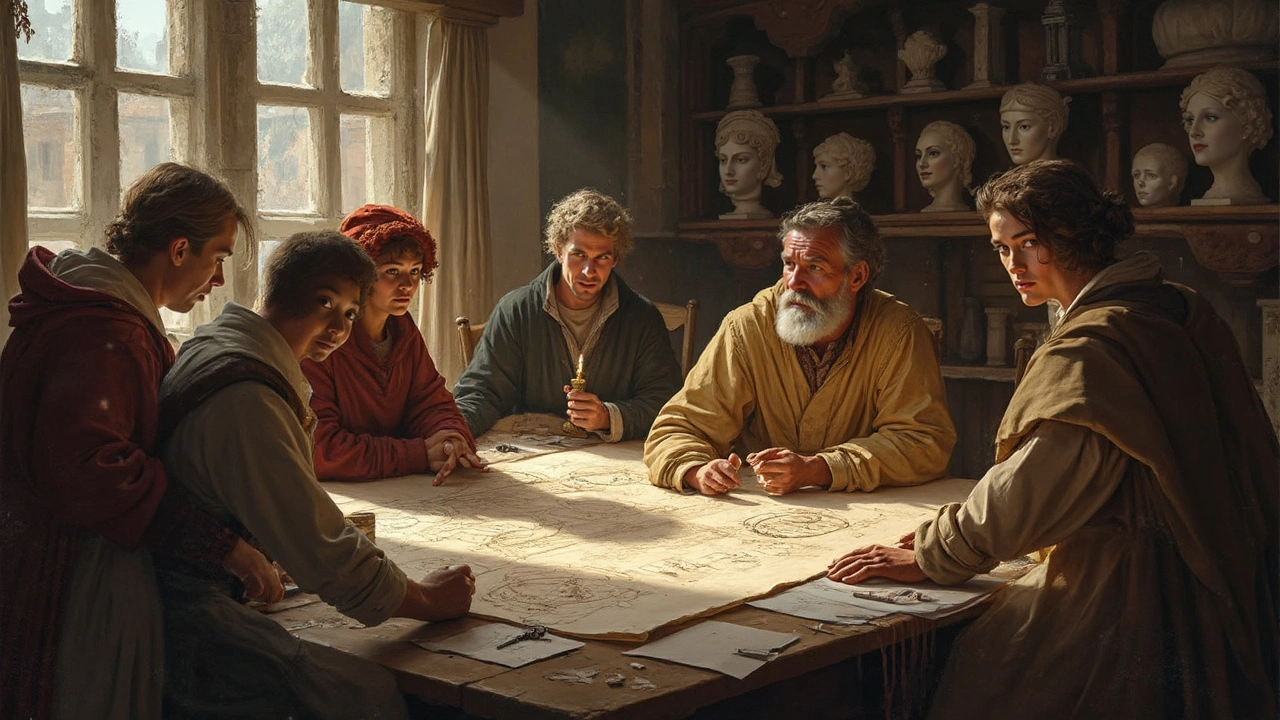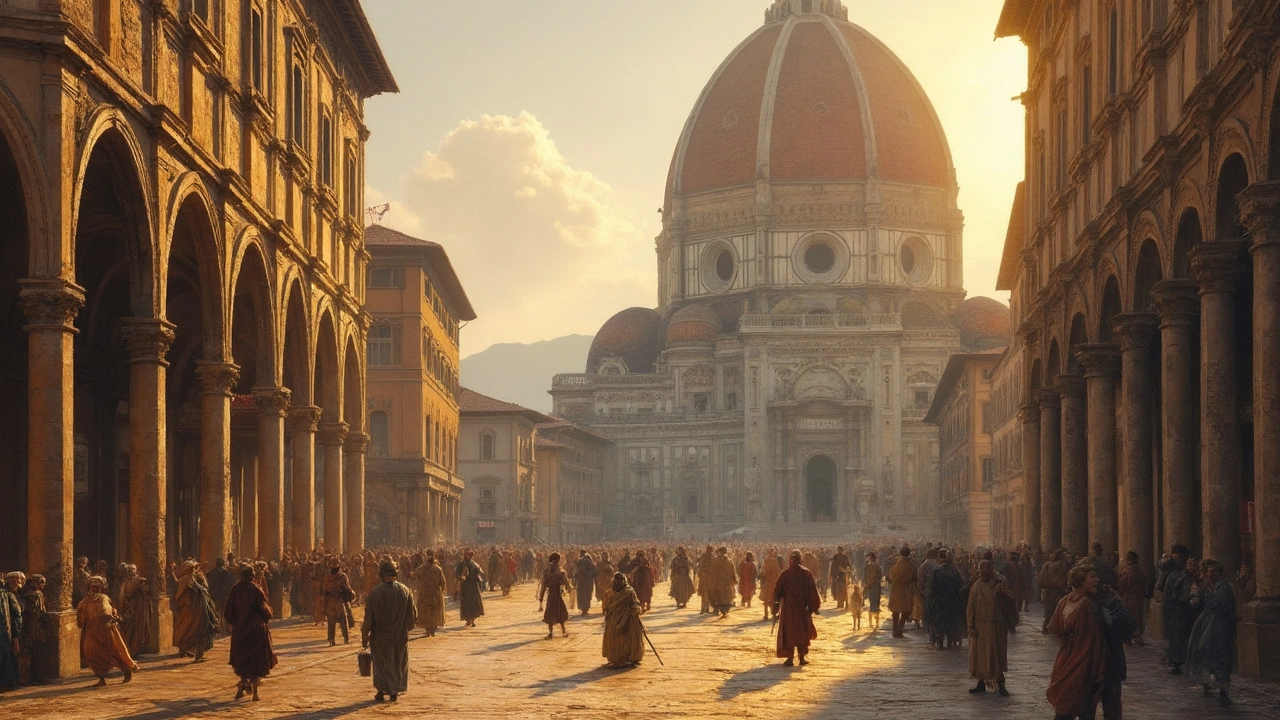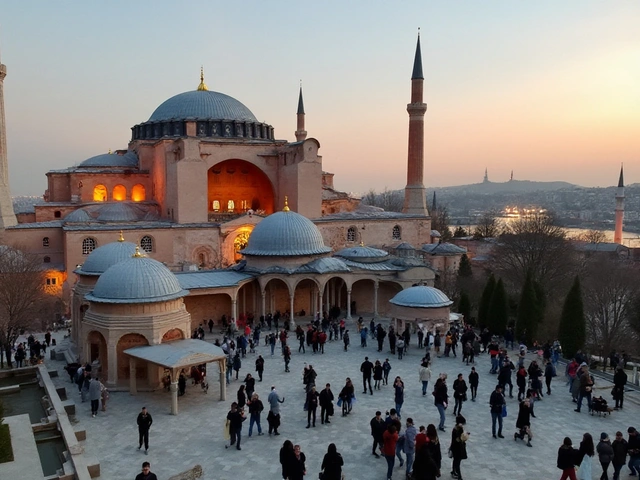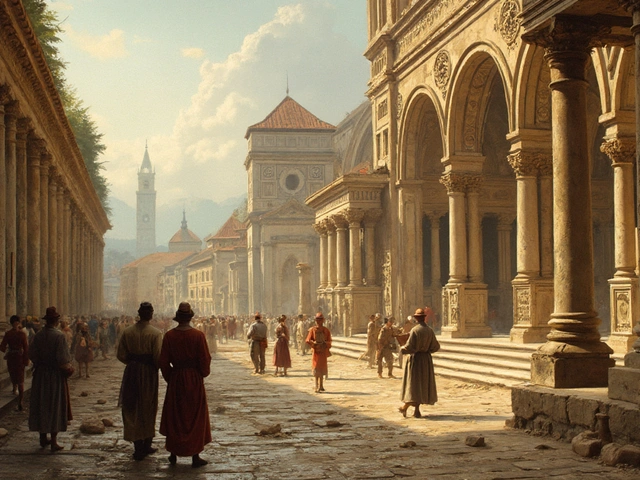Ask anyone to picture Italy and they’ll probably think of sun-baked piazzas lined with buildings that look like wedding cakes—elegant stonework, arches everywhere, and columns so perfect you half expect a toga-clad Julius Caesar to stroll by. You’ve just imagined Renaissance architecture, and that’s no accident. The Renaissance wasn’t just about painting dreamy angels in church ceilings; it was a total reset in how Europeans saw, built, and even thought about space. This golden age of design changed skylines, reshaped cities, and set the template for Western beauty. It’s wild to realize that today’s municipal skyscrapers and suburban homes still carry its DNA. Let’s crack into the stone, dust, and passion that defined this style and find out why Michelangelo’s shadow looms as much over your local courthouse as it does over the Vatican.
Setting the Scene: How Renaissance Architecture Began
If you’d landed in Florence around 1420, you’d smell more sawdust than perfume and hear more chisels than chatter. The city was buzzing—painters racing to invent perspective, poets scribbling about human potential, bankers dreaming of legacy buildings. At the heart of it all was a craving to revive the ancient world. The fall of Rome left broken aqueducts and faded frescoes, but after a few centuries of medieval gloom, cities like Florence and Rome got hungry for something grander. They looked backward—and forward, all at once.
What kicked off this fever dream of creativity? Some say it started with Filippo Brunelleschi and his dab-hand at domes—especially the one perched over Florence Cathedral. No one had built anything like it since Ancient Rome. He didn’t just stack bricks; he engineered a double shell, meaning the dome was light enough to stay up yet sturdy enough to be seen from miles away. His trick? Ribs for structure and a herringbone brick pattern. At nearly 45 meters across, it’s still the largest masonry dome on Earth. When Florence’s dome finally soared, it sent shockwaves through Europe, making the impossible suddenly doable.
And it wasn’t just Florence. Rome, Venice, even far-off London started borrowing from the recipe book—think columns, arches, domes, and careful symmetry. Scholars, called humanists, hunted down ancient Roman treatises, especially those by Vitruvius, who argued buildings should balance order, function, and beauty. Suddenly, geometric purity, harmonious ratios (like the famous “golden ratio”), and classical motifs were all the rage. Gone were medieval towers stuffed with narrow windows and jagged lines. In their place: measured, rational spaces that invited light, praised proportion, and practically begged you to linger.
Renaissance architecture didn’t happen in a vacuum. The period’s biggest patrons—the Medici family, popes, merchant guilds—funded building booms as much to show off power as to honor the arts. Palaces grew stylish facades, churches held up new domes, public squares expanded to welcome crowds. If you could pay, you could boast a painted ceiling or a colonnaded loggia. Nothing says ‘success’ like a perfectly symmetrical palace, right?
Here’s a quick snapshot of some major Renaissance architects and their key contributions:
| Architect | Major Work | Location | Period |
|---|---|---|---|
| Filippo Brunelleschi | Florence Cathedral Dome | Florence | 1419–1436 |
| Leon Battista Alberti | Santa Maria Novella Facade | Florence | 1456–1470 |
| Donato Bramante | Tempietto | Rome | 1502 |
| Michelangelo Buonarroti | St. Peter’s Basilica Dome | Vatican, Rome | 1546–1564 |
| Andrea Palladio | Villa Rotonda | Vicenza | 1567–1571 |
It wasn’t just who you hired. It was about the message your building sent. That’s why Florence brags so much about Brunelleschi or why the Sistine Chapel’s entrance gives you more drama than a soap opera binge. Big stone, big stories, big ambitions.
The Language of Beauty: Key Elements of Renaissance Architecture
If you look closely at any Renaissance building, you’ll see a toolkit at work. These architects weren’t tossing up stones by gut instinct—they were math nerds with creative flair. Columns and pilasters that echo the Greeks and Romans? Check. Arched windows popping with keystones? You bet. Domes, vaults, and loggias? Like a greatest hits album, but in marble. But what really sets Renaissance buildings apart isn’t just what’s there, but how it’s pieced together. Order, balance, and symmetry are king.
The classical orders—Doric, Ionic, Corinthian—got dusted off and put right up front. You’ll spot these in the facades of churches, palazzi, and even humble little chapels. Renaissance architecture turned the column from something structural into something symbolic. Each order carried a different message: Doric was strong and grounding; Corinthian shouted, “Look at all my leafy details!” Symmetry wasn’t just a style. Architects were obsessed with mirroring sides or balancing domes with courtyards, using math like a secret sauce. They played with the golden ratio (about 1:1.618 if you want to get geeky), believed to be the most pleasing ratio to the human eye, which shows up in countless facades, staircases, and porticos.
One wild fact—Brunelleschi had to invent new machines just to build his dome, like a three-speed hoist to lift heavy stones without snapping ropes. Those innovations then spread everywhere. And ceilings? They weren’t just there to keep out the rain. Look up inside many churches and you’ll find coffered ceilings (sunken panels), painted frescos, or elaborate stuccowork that makes gravity feel like a suggestion, not a rule.
There’s an almost mathematical serenity to these spaces. Take the Pazzi Chapel in Florence—its dome isn’t just a dome, but a series of perfectly repeated circles and semi-circles, all organized around a central plan. Light filters in just-so, casting shadows that dance across the floor at different times of the day. It’s architecture with a story, written in stone and sunlight.
Tips for spotting Renaissance influence in the wild? Look for facades split in three—one central entrance, one window on either side. Seek out domes with visible ribs, geometrical layouts in courtyards (think squares, circles, rectangles working in harmony). And keep an eye out for those spiffy classical details reimagined with a fresh twist: columns with spiral shapes, pilasters framing doorways, windows that look like upside-down commas.

The Titans: Artists and Architects Who Defined the Era
Take a stroll through Florence, Rome, or Venice in the early 1500s and you’d bump into creative rock stars on every corner. These weren’t just bricklayers; they were visionaries. Look at Michelangelo—he didn’t even call himself an architect until his sixties, but when asked to finish St. Peter’s Basilica’s dome, he went big. He stuck to Bramante’s earlier plans but made the dome taller and more dramatic, shaping the Roman skyline forever. His secret? Making the ribs hug closer, giving the whole structure an upward, aspirational look. You can see echoes of this dome everywhere—from the U.S. Capitol to London’s St. Paul’s.
Donato Bramante is another giant who can’t be left out. He introduced “high Renaissance” style—think harmony, clarity, and monumental forms. His Tempietto at San Pietro in Montorio is tiny but perfectly proportioned, with a circular colonnade that feels almost sacred. That little temple is considered a blueprint for “ideal” churches. Meanwhile, Andrea Palladio took things up a notch in the Venetian countryside. His villas—symmetrical, low, with big front porticos—became the gold standard for European country houses, and his books turned him into a global influencer before Instagram was even a glint in a programmer’s eye.
Leon Battista Alberti wasn’t just a designer but a theorist. His treatise, “De Re Aedificatoria,” handed down rules like commandments—favor balance, embrace beauty, let math be your guide. He finished the now-iconic Santa Maria Novella facade in Florence, using mathematical design to blend the lower medieval building and the upper Renaissance face without missing a beat.
What united these artists? They saw architecture as more than utility or shelter. For them, every arch or vault had a reason, down to the tiniest detail. They combined old Roman frameworks with unborn ideas, pushing everyone to think, “What if we could make something even greater?” It was an arms race of artistry that kept these guys hopping from city to city, always looking to outdo what had come before.
And let’s be honest: all these impressive buildings needed serious bank. Patrons like the Medici in Florence or wealthy popes in Rome weren’t just dabbling. They poured fortunes into construction projects, motivated by pride, faith, competition, or all three at once. That’s why Florence has such an intense collection of Renaissance buildings jammed into a small space. It was like a public art arms race—with echoes still felt in civic buildings everywhere.
- Fun tip: If you want to follow the literal footsteps of these titans, the "Vasari Corridor" in Florence connects the Uffizi Gallery to the Pitti Palace—an elevated secret passage built for the Medici. Talk about architectural flexing.
- Michelangelo reportedly said finishing Brunelleschi’s dome was like “surpassing the ancients”—a goal every Renaissance builder quietly obsessed over.
- Bramante’s Tempietto is only about 14 feet in diameter, but its impact can be felt in dozens of later monuments.
Living Legacy: How Renaissance Ideas Still Shape Today’s World
It might sound bananas, but the blueprint for today’s city squares, museums, and even many civic buildings all trace back to what those Renaissance brains cooked up. The obsession with light-filled rooms? That’s a page ripped from Alberti’s treatises. The neoclassical revival that swept through France, England, and America came straight from admiring these Italian palazzi and churches. When Thomas Jefferson dreamed up Monticello, he channeled Palladio’s symmetry and porticos. The U.S. Capitol isn’t shy about borrowing the dome drama from St. Peter’s, either.
Renaissance principles—symmetry, clarity, harmonic proportion—are now baked into everything from commercial malls to suburban homes. Architects stick to central axes, balanced wings, grand entrances, and colonnaded facades not just for beauty, but because people feel good in well-ordered spaces. Evidence? Surveys by architecture organizations regularly show people gravitate to public spaces and buildings with classical elements, highlighting the deep appeal of those Renaissance innovations even when we don’t consciously notice them.
Modern architects love to riff on these ideas. Some strip away the ornament but keep the layout. Others use abstract geometric forms as a nod to the golden ratio. Even sustainable building design owes something to the Renaissance—those masters obsessed over site placement, daylight, airflow, and the purpose of communal plazas.
Let’s get practical. Want to see Renaissance influence up close? Try these tips:
- Head to your local museum, town hall, or university—chances are you’ll spot arched windows, pilasters, or domed ceilings.
- Use a basic measuring app to check the symmetry of a facade—bet you, it’s all about those pleasing ratios.
- If you ever get to Florence or Rome, set aside an hour to simply sit and watch how sunlight moves across a Renaissance building. Those old architects designed with light in mind—each window and column was placed for certain effects at different times of day.
- Designing your own space? Even something small, like arranging your living room around a balanced central point, nods to Renaissance layouts.
Funny side note: my cat Whiskers has a favorite windowsill in our apartment that’s almost eerily symmetrical compared to the rest of the place. Sometimes, I wonder if he wasn’t an Italian master builder in a past life. I mean, you can’t prove he wasn’t.
What really keeps the Renaissance style alive isn’t just bricks or domes. It’s the idea that beauty, reason, and creativity go together—that spaces should work for people as well as impress them. That blend of function and grace invites us all to dream a little bigger every time we step inside. So next time you walk past a building that makes you stop and smile, thank a Renaissance architect. They’re everywhere, even if their names aren’t chiseled into the walls.




